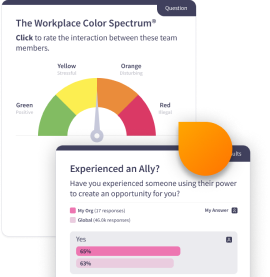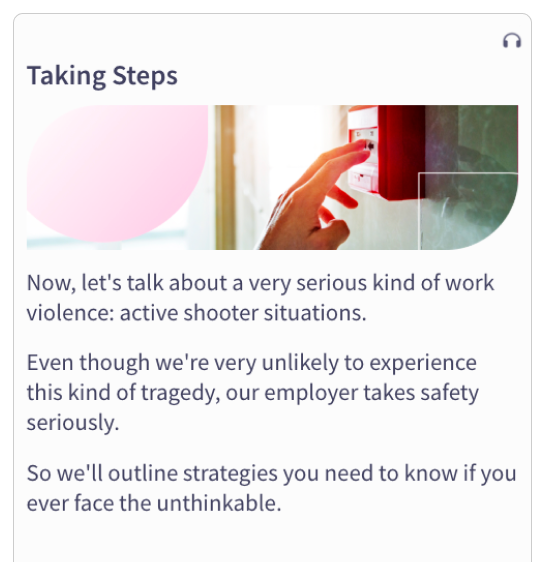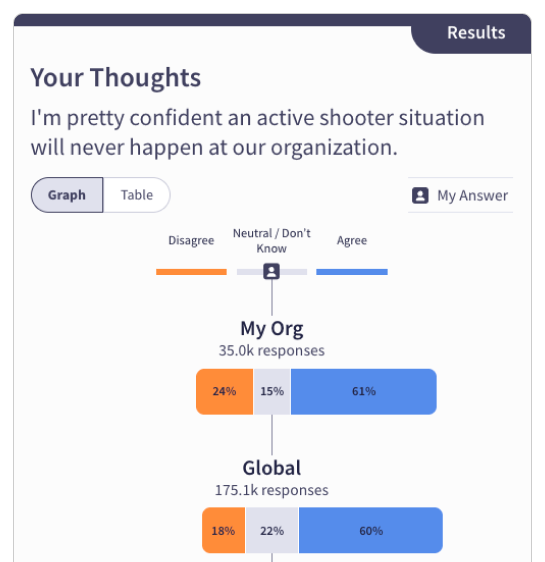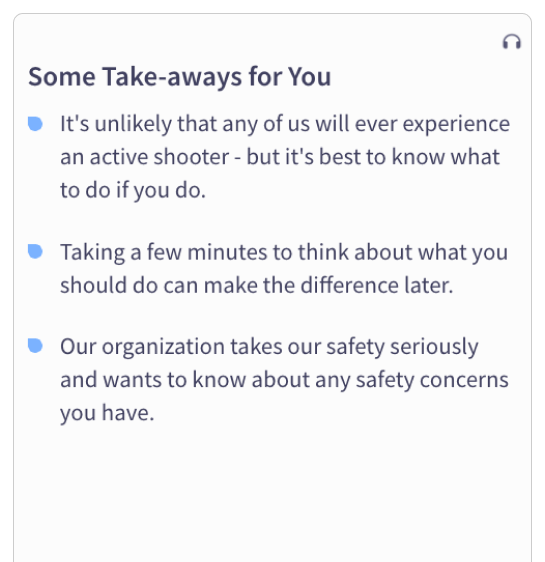
Emergency Preparedness Skills That Save Lives
How do you inform and prepare your workers when the unthinkable happens? While an active shooter in the workplace situation is very unlikely to happen, it’s best to know how to respond to it now and be prepared.
Microlesson DescriptionIn this microlesson, we outline four key strategies for dealing with an active shooter in the workplace situation based on the recommendations from the Department of Homeland Security. Every organization takes safety seriously. While we hope you never have to use them, being prepared could save lives. We dive into what needs to be done during an active shooter situation and how to behave when law enforcement arrives. The key lessons here are to remain calm and follow instructions.
Key Concepts- Taking a few minutes to think about what you should do can make the difference later.
- How you, the employer, takes safety seriously and want to hear about concerns so they can be addressed.
Microlesson Features
- Employee sentiment pulsing questions that provide leaders with insights into their workforce's core cultural competencies
- Emtrain's Expert Answers tool, enabling employeees to submit anonymous questions about sensitive issues.
- Rich, contemporary video scences illustrating key concepts through realistic scenarios
- A data driven, skill-based approach to eLearning that establishes a shared language for employees.

Related Resources
Related Trainings
Frequently Asked Questions
Below are answers to common questions that employees and managers have about this topic. These FAQs provide a preview of what you’ll learn in this microlesson and why it matters.



